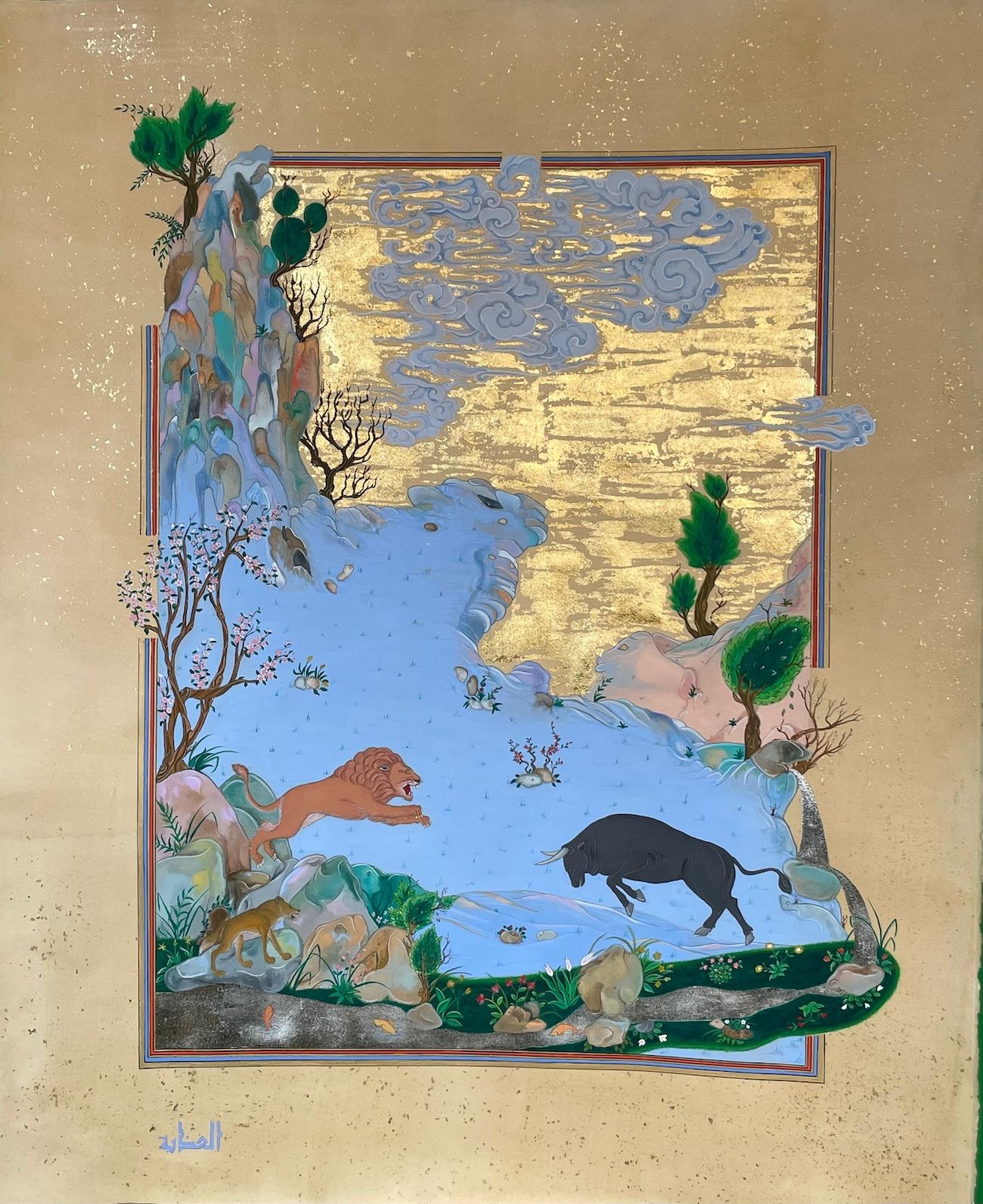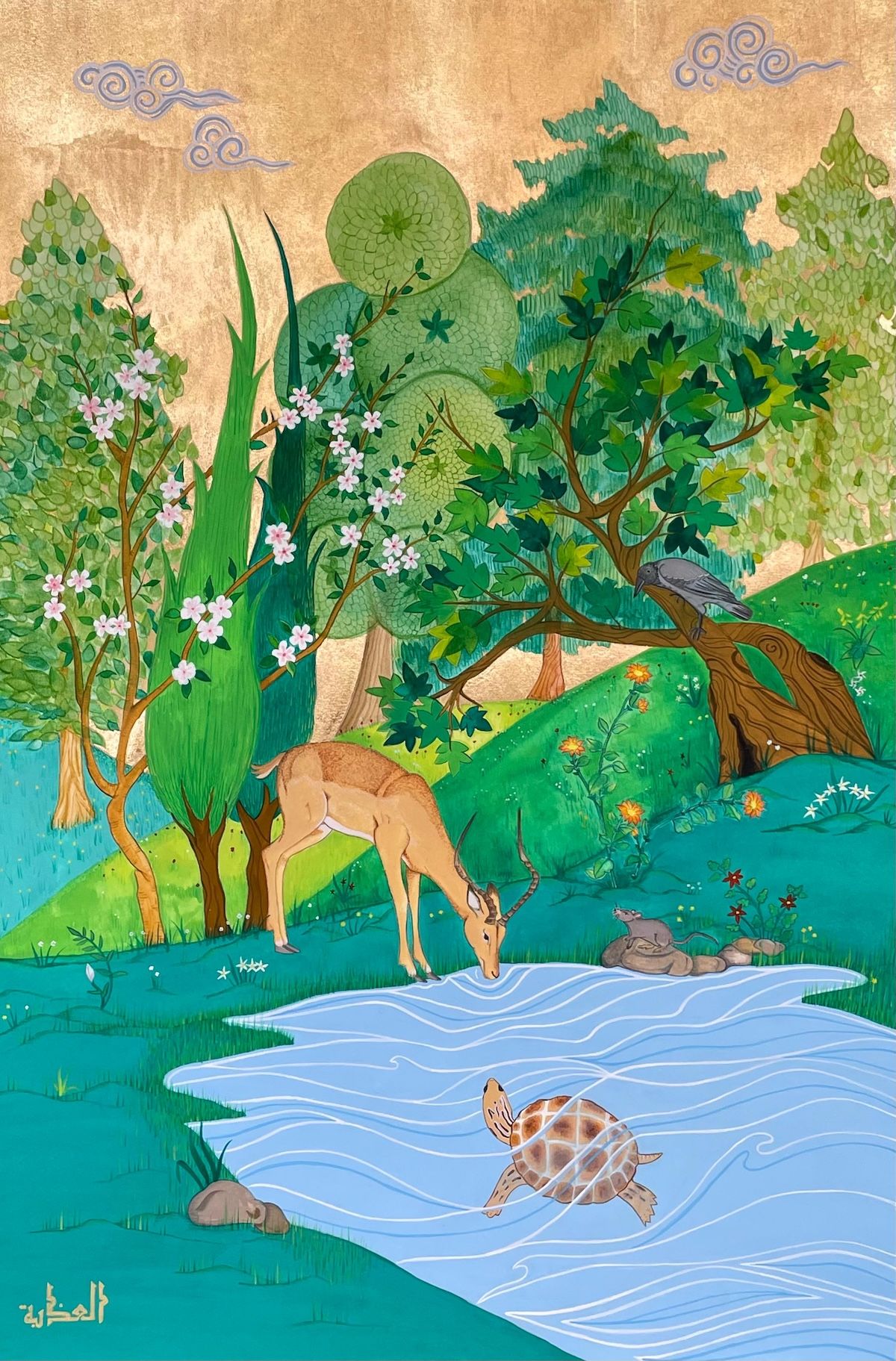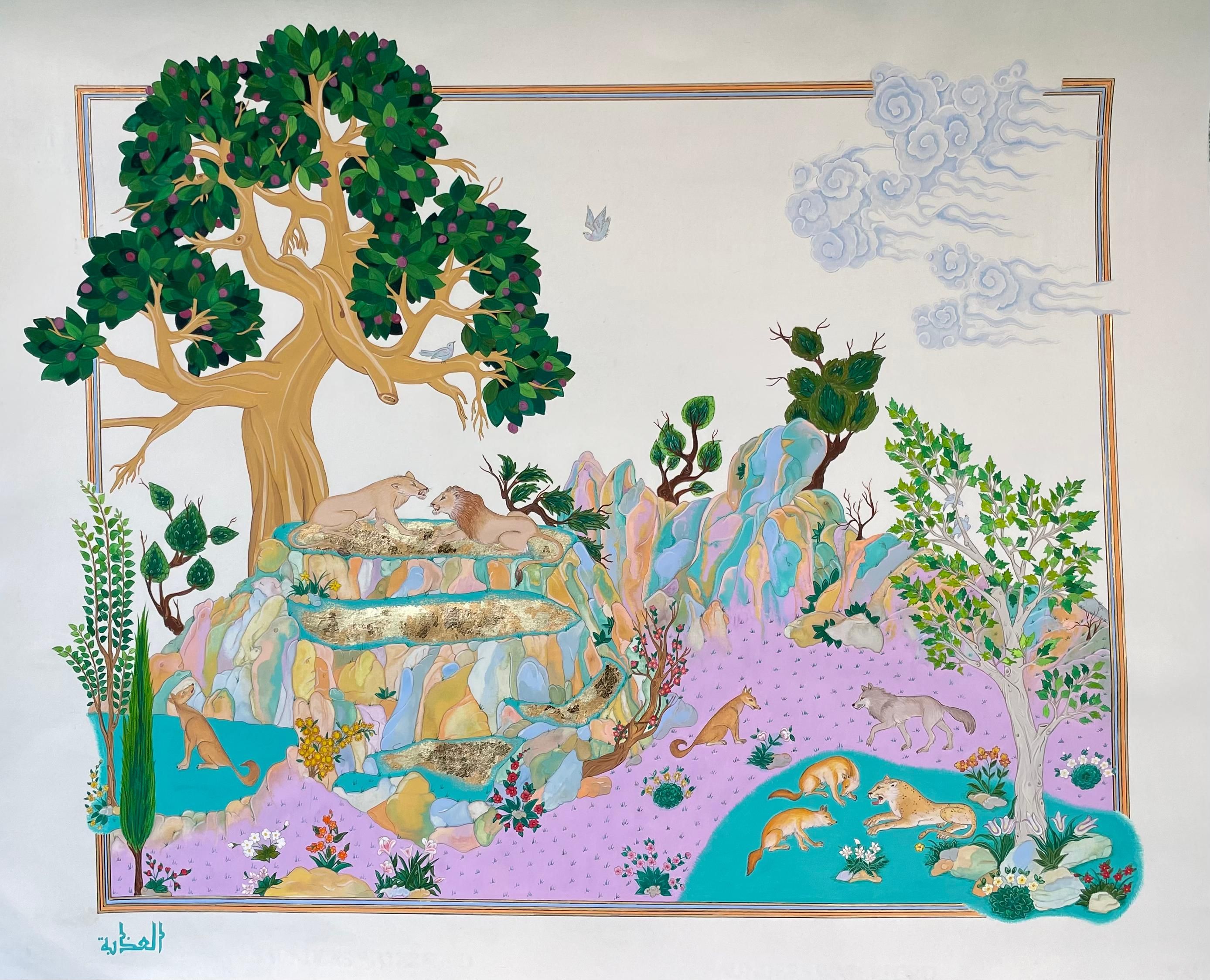Kalila wa Dimna - Timeless Fables Connecting Qatar and Latin America
2025/07/28
Years of Culture
false
2025/07/28

More than just a collection of stories, Kalila wa Dimna is a masterpiece of storytelling that uses animals to convey wisdom about leadership, ethics, and human behaviour.
The book takes its name from its two central animal characters, Kalila and Dimna (كليلة ودمنة), a pair of jackals whose cunning conversations serve as a framework for the many moral fables woven throughout the text.
As part of the Qatar, Argentina and Chile 2025 Year of Culture, this timeless classic is being celebrated through a new exhibition, storytelling sessions, and educational programming, highlighting the power of literature to connect diverse societies across continents and generations.

The Kalila wa Dimna book has a remarkable journey that began in ancient India. Its earliest incarnation appeared in Sanskrit as part of the Panchatantra, a practical manual intended to teach wisdom and statecraft to rulers and princes.
From India, the stories travelled to Persia, where they were translated into Middle Persian during the Sassanid period. But it was the 8th-century Arabic adaptation by Ibn al-Muqaffa, a Persian scholar and writer, that gave the collection its enduring Arabic form and global reach.
Ibn al-Muqaffa’s work has since become one of the most influential books in classical Arabic literature and served as a vehicle for sharing Eastern philosophies throughout the Islamic world and beyond. His version of Kalila wa Dimna became a foundational text in Arabic literature and later spread to Europe and beyond.
The structure and tone of Kalila wa Dimna can also be compared to Aesop’s Fables, which date back to ancient Greece, showing how interconnected human storytelling truly is.
At first glance, Kalila wa Dimna appears to be a series of simple, charming tales about talking animals. However, the work’s true genius lies in its layered structure of tales within tales and embedded life lessons.
Designed to educate future rulers, Kalila wa Dimna touches on diplomacy, justice, friendship, and betrayal. The book was used to teach moral reasoning, prudent governance, and social values.
Structured through frame stories, or narratives within narratives, the book uses parables to present complex ideas in accessible ways. The characters are often placed in morally ambiguous situations, encouraging readers to ponder consequences, motivations, and ethical dilemmas.
Kalila wa Dimna contains dozens of interlinked stories that have stood the test of time, but a few stand out in particular for their enduring popularity and narrative richness. Here’s a quick look at three well-known tales:

One of the most heartwarming and instructive fables in the collection. A deer, a tortoise, a crow, and a mouse form an unlikely alliance and demonstrate how unity and friendship can overcome even the greatest threats. When the deer is caught in a hunter’s net, the other three friends coordinate a clever rescue, each playing a crucial role based on their unique strengths. The tale reminds us that cooperation across differences can be a powerful force for good.
In this cautionary tale, a fox flatters a crow to make it sing and drop the food in its beak. It’s a succinct story with a powerful message: beware the influence of flattery. Versions of this story also appear in Aesop’s Fables, demonstrating the shared roots of these lessons across cultures.
In this popular tale, a clever crab outwits a deceitful crane who has been tricking and eating fish under the guise of helping them. When the crane tries to do the same to the crab, the crab sees through the plan and ultimately defeats him. The story highlights the importance of scepticism and critical thinking, a message that remains just as relevant today.
As readers reflect on the morals of Kalila wa Dimna, they discover that each story invites introspection on ethical decision-making and leadership.
The influence of Kalila wa Dimna stretches far beyond the Arab world. It has been translated into over 50 languages and circulated widely in Europe during the Middle Ages. It was also one of the first Arabic texts to be translated into Latin. Its frame narrative technique also influenced narrative structures in both Eastern and Western literature, contributing to the development of complex storytelling traditions around the world.
The fables are said to have influenced the works of Jean de La Fontaine, whose own French-language animal tales mirror many of the stories found in Kalila wa Dimna. Beyond literature, the stories have informed pedagogy, political philosophy, and even artwork across centuries and cultures.
In 2025, this iconic work takes centre stage as part of the Qatar, Argentina and Chile Year of Culture, through two major events that are bringing this literary treasure to life for new generations.
In partnership with Years of Culture, Qatar Reads, an initiative of Qatar National Library proudly presents the Kalila wa Dimna Art Exhibition. Hosted at the Biblioteca Ricardo Güiraldes in Argentina, this exhibition showcases twelve original artworks by Qatari artist and author Wadha Al Athba.

Rendered in the delicate tradition of Islamic miniature painting, Wadha’s rich illustrations capture the humour and insight of the original fables while connecting them with modern visual sensibilities.
These twelve pieces are also featured in a Spanish-language edition of Kalila wa Dimna, written and illustrated by Wadha Al Athba, and published by Hamad Bin Khalifa University Press. Distributed to children across Argentina, the book creates a meaningful cultural link between the Arab world and Latin America, introducing new generations to the book’s enduring messages.
A complementary programme will take place at the National Library (Biblioteca Nacional de la República Argentina). This event will feature a storytelling session in Spanish, hands-on crafts activities for children, and the distribution of Kalila wa Dimna-themed reading kits.
In celebrating Kalila wa Dimna through visual art, storytelling, and international collaboration, the Years of Culture initiative continues to foster mutual understanding and creative exchange.
This year’s programming highlights the enduring relevance of a centuries-old book, demonstrating how fables first told in royal courts of India and reimagined in the Islamic Golden Age still resonate deeply today.
Discover more upcoming events in Qatar and beyond.